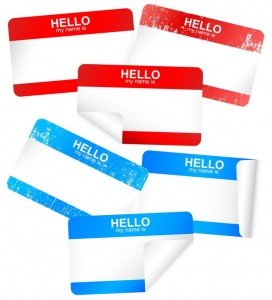Building Your Personal Programmer Brand
Just because you’re a software developer doesn’t mean that you don’t have to worry about branding. In fact, if you really want to boost your career, you’ll actively manage it by creating your own personal brand.
In this post and I am going to help you create your own personal brand by first giving you a clear picture of what makes up a brand. (Hint, it isn’t just a logo.) I’ll also show you how to create an effective personal brand by defining your niche. Finally, I’ll take you through the 4 important components of creating your own personal brand.
What is a brand?
Before we can create a personal brand, we need to understand what exactly a brand is.
Most people I talk to think of a brand as a logo. While many brands have logos, a brand is not just a logo. A logo is only a small part of what makes up a brand.
A brand is really a promise.
A brand is all about expectations. When you are creating a brand, you are building a set of expectations about you or your company and you are making a promise to deliver on those expectations.
Think about a popular brand like Starbucks. What kind of promises does the Starbucks brand make?
When you walk into a Starbucks, you immediately have some expectations about what will be on the menu, how you will be treated and even what kind of lighting will be used in the location.
A fancy logo isn’t what makes the Starbucks brand a successful brand. Instead, the unique promise that Starbucks makes to you and every other customer is what makes them a brand.
I like to think of a brand as having or requiring four main components:
- Message – what does this brand represent?
- Visuals – how is the brand visually represented?
- Consistency – is the message the brand is delivering the same and one I can rely on?
- Repeated exposure – does the brand appear often enough for me to recognize it?
Without these four aspects, a brand is doomed for failure. A brand must have a clear consistent message, and be visually recognized multiple times in order for it to be effective.
We’ll come back and break down each of these four components a little later on, but before we do, let’s talk about what personal branding is.
Personal branding
It is easier to picture what personal branding is if you are able to see yourself as a business.
Instead of thinking of your career as the job you currently have, try and envision yourself as a business that provides software development services. If you are working for someone else, you just happen to only have one customer right now.
When, you think in terms of being a business, personal branding makes much more sense. It is just a brand that you apply to the business that is you.
A personal brand is the promise you make and expectations you create concerning the services you provide.
In order to create a good personal brand, you need to choose what is called a niche. A niche is just a specialization in a larger market.
For example, you might choose to make your niche be the realm of NoSQL databases. Perhaps you want to be known as the NoSQL database wizard.
Or maybe you are the test driven development JavaScript guru, who specializes in teaching JavaScript developers how to write effective tests for their code.
The more you can niche down into a market, the stronger your brand will be in that particular market. When you call a plumber because your garbage disposal is broken, would you be more likely to call ABC Plumbing or The Garbage Disposal Fix-it Man?
You’ll have much more success creating a personal brand if you can niche down and be as specific as possible.
(By the way, if you are looking for a good book on personal branding, even though this book is called Personal Branding for Dummies, I found it to be a very comprehensive book on the subject.)
Crafting a message
A major component of your brand will be your message. Your message is what your brand represents. A brand without a message isn’t really doing anything, because it isn’t trying to communicate anything.
Your message should communicate what your brand is about and the set of expectations and promises your brand delivers on.
If you are having a hard time thinking of the message for your personal brand, the first place to start is to look at the value you provide. What value do you as a software developer or software development company provide?
Why should someone hire you for a job?
Behind your message should be unique value you provide. Are you the best front-end developer money can buy? Can you learn new technologies faster than anyone else? What is the unique value proposition you offer that should compel someone to hire you instead of everyone else?
Creating visuals
Even though a logo isn’t the only thing that makes a brand, it is certainly an important part of most brands. A good brand has good visuals, and you should too.
Obviously the first place to start is with creating your own logo. You can either use a company name or make a logo out of your own name. I’ve seen both used very effectively. For example, I use Simple Programmer as my brand, and I’ve had a logo created for that brand.
You don’t have to spend ridiculous amounts of money to get a good logo. I’ve had great logos created for me for $5 on the popular Fiverr site. You can also find someone on oDesk for cheap that will create an excellent looking logo.
You also want to have a good color scheme that you use with all of your branding. I’d recommend using the same color scheme on your online profiles and your blog, if you have one. (And you really should have one.)
I also, recommend using stock photos to help shape your message. If you want a good source for stock photos check out despositphotos.
Finally, as far as visuals go, you want to have a good headshot that you can use everywhere you put your picture online. I’d recommend getting a professional headshot. Here is a good tip on how to get it done for cheap: The next time you get family photos done, ask the photographer to do a few headshots for you as well.
Being consistent
Once you’ve got a message and you’ve got some nice visuals to go with it, you’ll need to consistently apply both the message and the visuals in order to really create a brand.
Consistency is a big part of building your personal brand. You can’t be Joe the C++ pointer guy today, and Joe the database guru tomorrow. You’ve got to pick something and stick with it long enough for it to catch on.
Think about some examples of personal brands you recognize. Do those personal brands change from day to day? When you go to your favorite tech bloggers website, do you have a pretty good idea of what you are going to see and how often you are going to see new content?
I’m not going to lie, it is going to take some time to build up your personal brand, but if you are consistent with the activities you are doing, the visuals you are using and the message you are delivering, you will build a personal brand for yourself over time.
Getting exposure
You can do everything else right and if you don’t have repeated exposure, you still won’t have much of a brand.
If you only see or hear of a brand once or twice, it is not going to stick in your head and it won’t be very effective.
In order to make your personal brand stick, you need multiple exposures of the same message and visuals to the same person or group of people.
There are many ways to get exposure for your brand, including:
- Creating and maintaining an active blog
- Writing magazine articles or guest posts on other blogs
- Speaking at user groups or conferences
- Appearing on podcasts or other mediums
- Writing a book, self or traditionally published
- Contributing to open source
- Creating YouTube videos or tutorials
At first, you may only be able to do a few of these things, but as you build your brand, you’ll get more opportunities to do more and more of the things on this list and even some things that aren’t on this list.
The important thing is that you get yourself out there and provide real value to others. If you are providing value and you are doing it in a consistent way that utilizes your message and brand visuals, you will build brand recognition and create excellent opportunities for yourself.
Where to go from here
I can only cover so much in a short blog post about personal branding. I’ve got much more in depth information about the topics covered in this post, which I am working on putting together into a package about Marketing Yourself as a Software Developer. In that package, I’ll have a complete video series about building a brand. If you want to know when the course is released, make sure you sign up here. (I’ll also let you know when I post blog posts about boosting your career.)
![]()








Great post, thanks a lot for sharing.
you inspired us through this nice article john.